France is home to so many famous destinations. It’s easy to get caught up in the glitz and glamour of Paris, the beaches of Nice, and the lavender fields of Provence. But venture off the beaten path, and you’ll discover France has a treasure trove of hidden gems waiting to be explored. From a secluded artists’s village in the Dordogne Valley to an island paradise on the Atlantic coast, these destinations showcase the diversity of France beyond the obvious hot spots. In this article, you’ll know 10 under-the-radar places in France and why they deserve a spot on your travel bucket list. These hidden gems prove there’s so much more to discover in this magical country if you’re willing to go off the map.
1. Albi, Occitanie
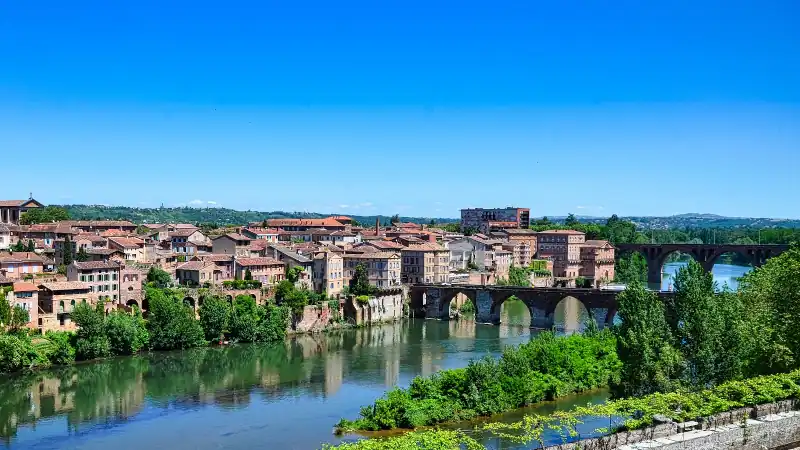
Nested along the river Tarn in southern France Albi is a picturesque town known for its remarkable architecture and history. The historic centre of Albi is a UNESCO World Heritage Site, dominated by the vast Saint Cecilia Cathedral. Built between the 13th and 15th centuries, the cathedral is a masterpiece of southern Gothic architecture, with its red-brick facade and towering bell tower.
Art lovers will appreciate the Museum Toulouse-Lautred, which houses the world’s largest collection of paintings, drawings, and posters by Henri de Toulouse-Lautrec, Albi’s most famous native son. The museum is set within the Palais de la Berbie, a former bishop’s palace.
2. Les Baux-de-Provence, Provence-Alpes-Côte d’Azur
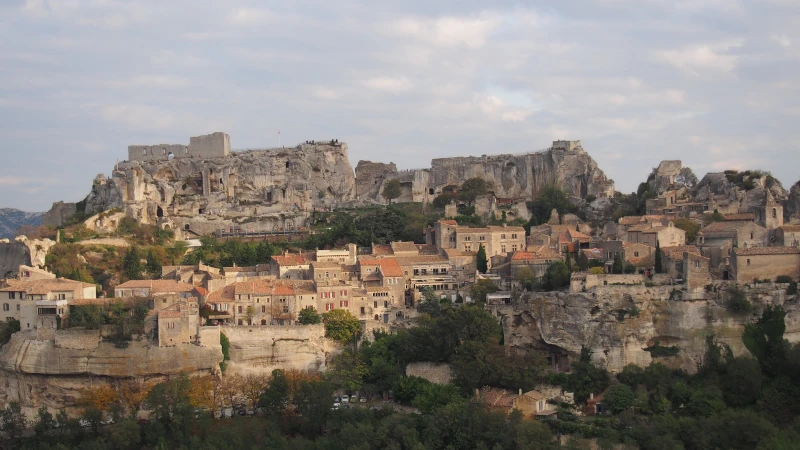
Situated in the Alpilles mountains of Provence, Les Baux-de-Provence is a picturesque village that looks like it was plucked straight from a fairy tale. With cobbled streets, medieval ramparts and an imposing castle perched on a rocky plateau, it’s easy to see why Les Baux was once an inspiration for the surreal landscape in Salvador Dali’s paintings.
Les Baux has managed to preserve much of its medieval charm. As you wander the narrow alley, you’ll stumble upon remnants of the past like the 12th-century St. Vincent’s Church and the ruins of the Château des Baux, a fortress that was once home to the Lords of Baux. For the best views, climb the 16th-century bell tower of St Vincent’s Church.
There’s an almost surreal quality to the ancient olive groves, scattered boulders and Alpilles peaks surrounding Lex Baux. It’s what attracted artists like Dali and Ban Gogh, who captured the area’s unique beauty. The best spot to appreciate the fantastical landscapes is the Val d’Enfer, a rocky plateau riddled with caves. According to legend, witches and devils once lived here.
Despite its small size, Les Baux hosts many cultural events year-round. In summer, there are medieval festivals, theatre performances and outdoor cinema screenings. Les Baux is also home to the Cathédral d’Images, a former bauxite quarry that showcases monumental art projections and light shows. Where witnessing the grandeur of its castle ruins or enjoying a cocktail at sunset, Les Baux will leave you enchanted.
3. La Roque-Gageac, Nouvelle-Aquitaine
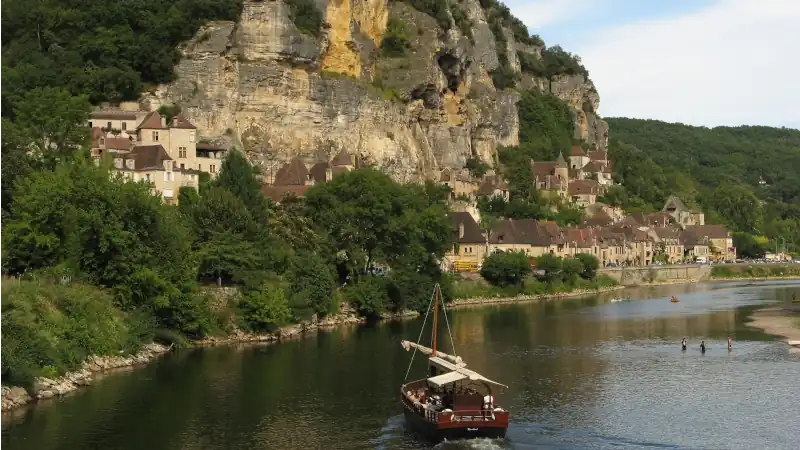
La Roque-Gageac is a picturesque village located along the Dordogne River in southwestern France. With its terraced houses carved into the cliffside and narrow cobblestone streets, it looks as if it was frozen in time. The hidden gem attracts visitors seeking tranquillity and natural beauty.
La Roque-Gageac offers many opportunities to get outside and enjoy nature. Go canoeing or kayaking along the river, with stops to explore and go for a swim. The area also boasts excellent rock climbing routes, hiking trails and cycling paths. Adventure seekers won’t be disappointed.
Despite its natural setting, La Roque-Gageac has a long history and was once an important port town. Several medieval houses still stand, with architecture typical of the region. The town also has many historic sites like the Château de Fénelon and the Église de La Roque-Gageac, a Romanesque church. Exploring the cobbled streets, you’ll feel transported to the Middle Ages.
Nested in the countryside and filled with culture and outdoor activities, La Roque-Gageac encapsulates the hidden beauty of France that many tourists miss. A trip to this secret gem will create lasting memories of a charming village and a peaceful escape from modern life.
4. Pont-Aven, Brittany
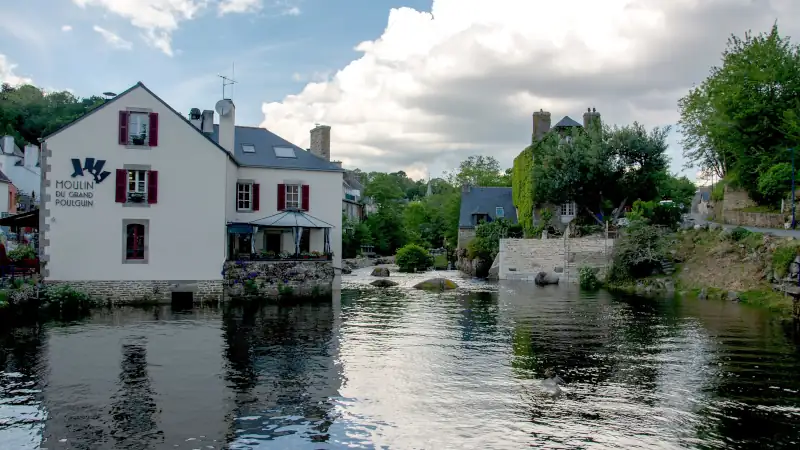
Pont-Aven is a charming village located in southern Brittany, France. Known for its scenic beauty and artistic history, Pont-Aven attracted many famous artists in the late 19th century, including Paul Gauguin.
Surrounded by forests and rivers, Pont-Aven’s natural landscape inspired the Pont-Aven School of Artists. They were drawn to the picturesque mills, bridges and riverside cottages. You can follow in the artist’s footsteps along the “Gauguin trail” to see where they painted.
The village has a timeless feel with its medieval architecture and half-timbered houses. Cafes, art galleries and shops line the main street. No trip is complete without trying a crepe or galette, washed down with a crisp cider.
Outside the village, the secluded beaches and coastal paths provide opportunities for walking, cycling or horseback riding. The dramatic cliffs and rock formations of the Point du Raz are only a 30-minute drive west.
5. Riquewihr, Alsace
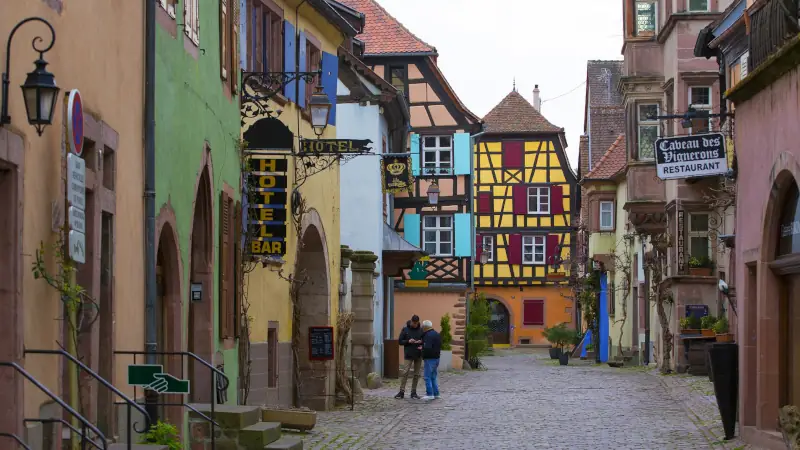
Nested in the foothills of the Vosges Mountains, the picturesque village of Riquewihr transports visitors back in time. Once an important centre of wine production, Riquewihr still produces world-class Rieslings and Gewürztraminers. A stroll through the village leads past numerous wineries where visitors can sample crisp whites and aromatic wines. For the best views, climb the ramparts surrounding the village or ascend the stone Tour des Voleurs (Thieve’s Tower).
Though small, Riquewihr packs a lot of charm into its narrow streets. The historic buildings house boutiques selling traditional Alsatian products like pretzels, gingerbread, and Munster cheese. At the Musée de la Communication, see antique printing presses and postal artefacts.
6. Cassis, Provence-Alpes-Côte d’Azur
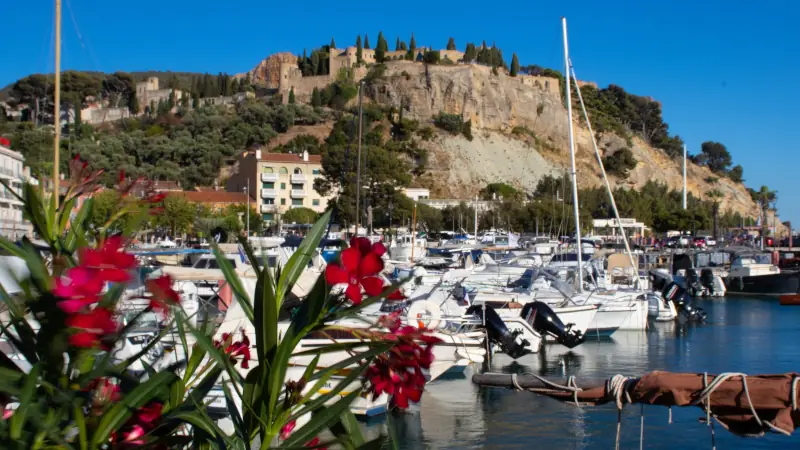
The picturesque port town of Cassis, located in southeastern France, offers visitors a chance to experience the Mediterranean coastline without the usual crowds. Cassis is known for its pastel-coloured houses, cobblestone streets, and stunning natural wonder: the Calanques. These massive limestone cliffs and inlets stretch along the coast for miles, with azure waters so clear you can see fish swimming below.
The Calanques are a hiker’s paradise, with trails winding through pine forests and along vertiginous sea cliffs. For a stroll, walk the promenade around the port, where cafés and restaurants spill out onto the sidewalks. At the beach, you can go sunbathing, swimming or kayaking in the bay’s turquoise waters. Rock climbing is also popular, with routes scaling the sea cliffs and hillsides surrounding the town.
7. Saint-Malo, Brittany
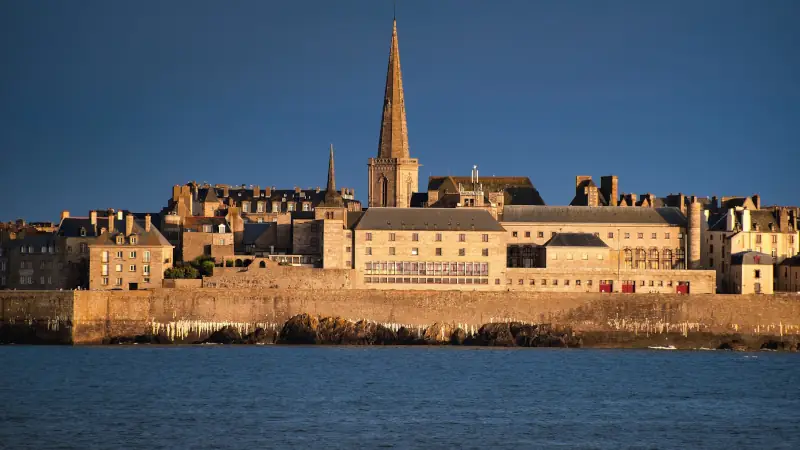
Saint-Malo is a port city in Brittany, northwestern France, that offers a charming medieval walled city and beautiful beaches. Visitors can stroll along the ramparts of the walled city, exploring the cobblestone streets and half-timbered houses. The walled city was built in the 12th century, meant to protect the town from invaders. Today, the ramparts offer panoramic views of the sea and surrounding area.
Just outside the walled city are several beaches, including the popular Plage de Bon Secours. The tides in Saint-Malo are among the highest in the world, revealing large expanses of sand at low tide. Beachgoers can go tide pooling, building sandcastles, or simply sunbathing and swimming.
Saint-Malo is also a popular ferry port, with ferries departing for the Channel Islands and ports in southern England. The town has a long maritime history, being home to famous explorers like Jacques Cartier. Today, Saint-Malo remains an important fishing port and seaside resort town in Brittany, attracting many visitors in the summer. Yet outside of peak tourist season, Saint-Malo maintains its charm and offers an escape from major crowds found in other parts of France.
8. Aigues-Mortes, Occitanie
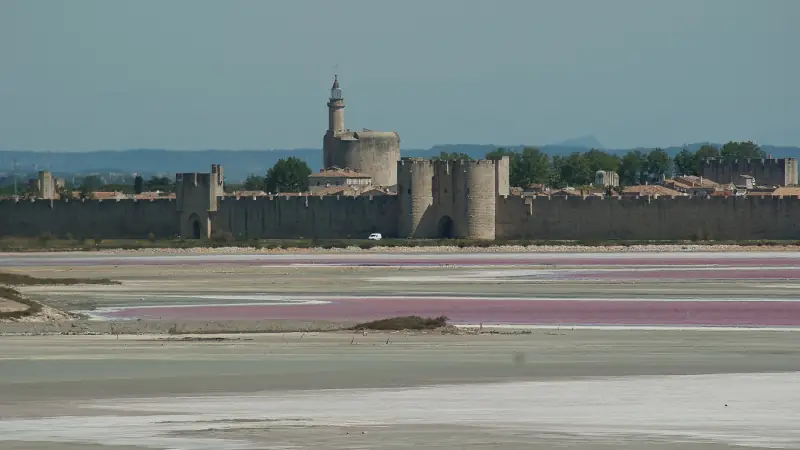
The walled city of Aigues-Mortes is a wonderfully preserved medieval town in southern France, located in the Occitanie region. Surrounded by marshes and salt flats, Aigues-Mortes was once an important port town in the 13th century, and it still retains much of its historic architecture and charm today.
Within the stone ramparts, the narrow cobblestone streets are lined with artisan shops and restaurants. The main square, Place St. Louis, is dominated by the Constance Tower, which offers panoramic views of the Camargue area from its top. The town is also home to the Church of Notre Dame des Sablons, built in a Romanesque architectural style.Just outside the walls, the salt marshes are home to hundreds of bird species, including pink flamingos. Boat tours of the marshes and canals offer a unique glimpse into the natural scenery and wildlife of the region.
9. Beaune, Bourgogne-Franche-Comté
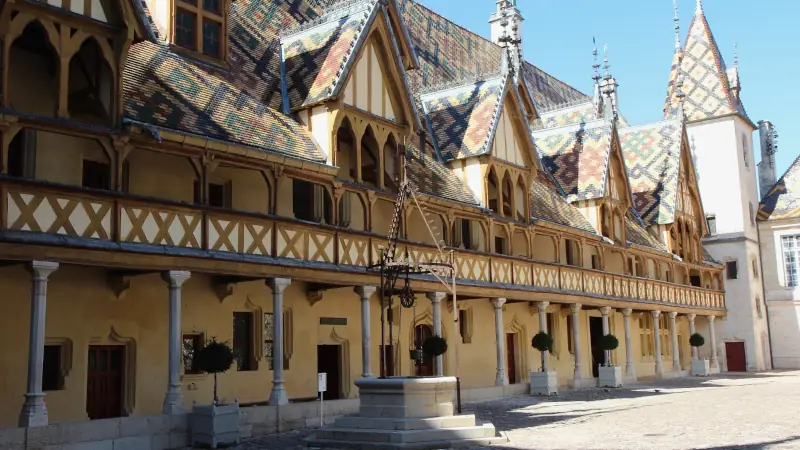
Beaune is the wine capital of Burgundy in eastern France. While tourists flock to the vineyards and wineries, the town itself is often overlooked. With its medieval ramparts, cobblestone streets and historic hospices, Beaune deserves a spot on any Burgundy itinerary.
The Hôtel-Dieu de Beaune, also called the Hospices de Beaune, is Beaune’s top attraction. This 15th-century hospital complex has a courtyard, chapel and pharmacy, all with Renaissance architecture and vivid glazed-tile rooftops. The Hospices also hold an annual charity wine auction in November.
Beaune’s old town is a delight to explore on foot. Walk the ramparts that encircle the city centre and stroll narrow lanes lined with wine shops, cafés, and half-timbered houses with turrets and towers. Stop for a glass of Pinot Noir and people-watch on Place Carnot, Beaune’s main square.
Just outside the ramparts are the collegiate Notre-Dame Basilica, a Romanesque church, and the Musée des Beaux-Arts, housing paintings from the 14th century to today. For panoramic views of Beaune and the surrounding vineyards, climb the tower of the Basilica
10. Saint-Cirq-Lapopie, Occitanie
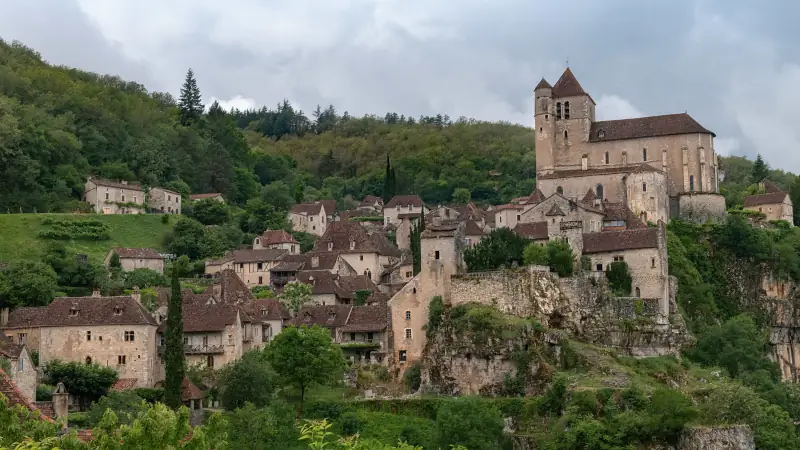
Nestled in the Lot Valley, Saint-Cirq-Lapopie is a picturesque village that overlooks the Lot River. Known as “one of the most beautiful villages in France,” this hidden gem attracts those looking to escape the crowds. The village has preserved its medieval architecture, with cobbled streets winding past stone houses with timbered facades.
A walk through the village leads to the ruins of a 14th-century castle that offers panoramic views of the valley. The Church of Saint-Cirq-Lapopie sits at the highest point of the village, containing relics of Saint Cirq, the village’s patron saint. For art lovers, the village has been home to many artists and features art galleries displaying local artwork.
Outdoor enthusiasts will enjoy activities like hiking, cycling, and canoeing in the region. The Lot River is a popular spot for canoeing, with stunning views of the village from the water. The surrounding countryside contains walking trails with scenic vistas at every turn
So there you have it – 10 of the most charming hidden gems in France that are waiting to be explored. For people seeking to travel to less crowded places, these hidden corners of France offer the chance to create unforgettable memories off the beaten path.
